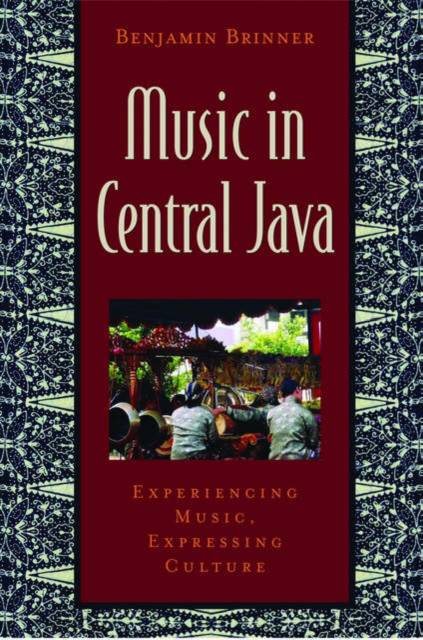
- Afhalen na 1 uur in een winkel met voorraad
- Gratis thuislevering in België vanaf € 30
- Ruim aanbod met 7 miljoen producten
- Afhalen na 1 uur in een winkel met voorraad
- Gratis thuislevering in België vanaf € 30
- Ruim aanbod met 7 miljoen producten
Zoeken
€ 209,45
+ 418 punten
Omschrijving
Music in Central Java is one of several case-study volumes that can be used along with Thinking Musically, the core book in the Global Music Series. Thinking Musically incorporates music from many diverse cultures and establishes the framework for exploring the practice of music around the world. It sets the stage for an array of case-study volumes, each of which focuses on a single area of the world. Each case study uses the contemporary musical situation as a point of departure, covering historical information and traditions as they relate to the present. Visit www.oup.com/us/globalmusic for a list of case studies in the Global Music Series. The website also includes instructional materials to accompany each study.
Music in Central Java offers a vivid introduction to the region's musical and cultural landscape, showing how three themes--flexibility, appropriateness, and interconnectedness--characterize Javanese musical practices and traditions. Drawing on his extensive fieldwork, author Benjamin Brinner takes an in-depth look at gamelan music--a traditional musical ensemble tradition that typically features metallophones, xylophones, drums, and gongs--providing readers with a sense of what it means to be a musician performing gamelan. Building from fundamental Javanese concepts of time and melody, the book covers gamelan's instruments, musical idioms, and central interactions and also surveys contrasting performance contexts. It examines both the theatrical and musical aspects of the vibrant tradition of shadow-puppet plays (Wayang kulit) and offers a broad survey of other music found in Central Java. In addition, Music in Central Java provides an engaging portrait of a leading Javenese musician, traces musical responses to radical social, political, and cultural changes over the past century, and considers Javanese music in relation to Indonesia and the rest of the world.
Enhanced by eyewitness accounts of performances, interviews with key performers, vivid illustrations, and hands-on listening activities, this book is a captivating introduction to the music of Central Java. It is packaged with a 78-minute audio CD containing examples of the music discussed in the book.
Music in Central Java offers a vivid introduction to the region's musical and cultural landscape, showing how three themes--flexibility, appropriateness, and interconnectedness--characterize Javanese musical practices and traditions. Drawing on his extensive fieldwork, author Benjamin Brinner takes an in-depth look at gamelan music--a traditional musical ensemble tradition that typically features metallophones, xylophones, drums, and gongs--providing readers with a sense of what it means to be a musician performing gamelan. Building from fundamental Javanese concepts of time and melody, the book covers gamelan's instruments, musical idioms, and central interactions and also surveys contrasting performance contexts. It examines both the theatrical and musical aspects of the vibrant tradition of shadow-puppet plays (Wayang kulit) and offers a broad survey of other music found in Central Java. In addition, Music in Central Java provides an engaging portrait of a leading Javenese musician, traces musical responses to radical social, political, and cultural changes over the past century, and considers Javanese music in relation to Indonesia and the rest of the world.
Enhanced by eyewitness accounts of performances, interviews with key performers, vivid illustrations, and hands-on listening activities, this book is a captivating introduction to the music of Central Java. It is packaged with a 78-minute audio CD containing examples of the music discussed in the book.
Specificaties
Betrokkenen
- Auteur(s):
- Uitgeverij:
Inhoud
- Aantal bladzijden:
- 192
- Taal:
- Engels
- Reeks:
Eigenschappen
- Productcode (EAN):
- 9780195147377
- Verschijningsdatum:
- 1/04/2007
- Uitvoering:
- Boek
- Afmetingen:
- 146 mm x 214 mm
- Gewicht:
- 240 g

Alleen bij Standaard Boekhandel
+ 418 punten op je klantenkaart van Standaard Boekhandel
Beoordelingen
We publiceren alleen reviews die voldoen aan de voorwaarden voor reviews. Bekijk onze voorwaarden voor reviews.








